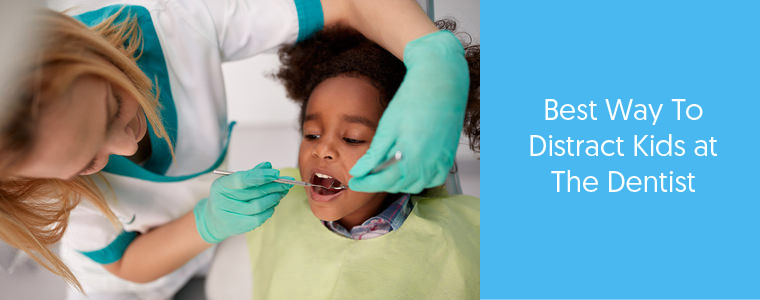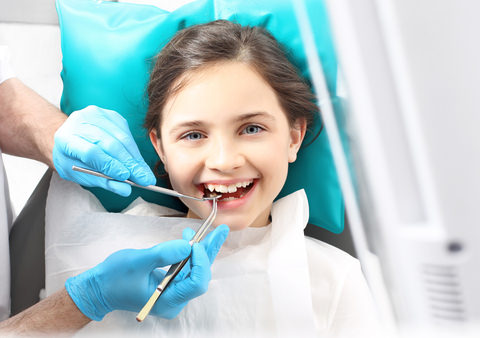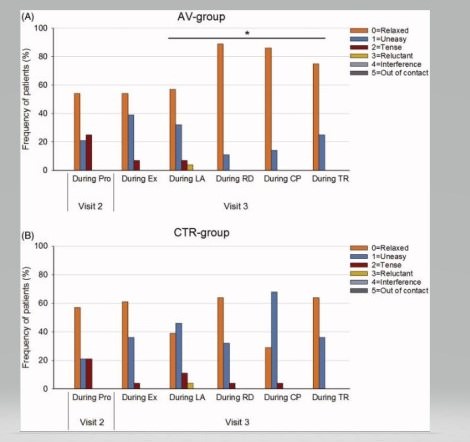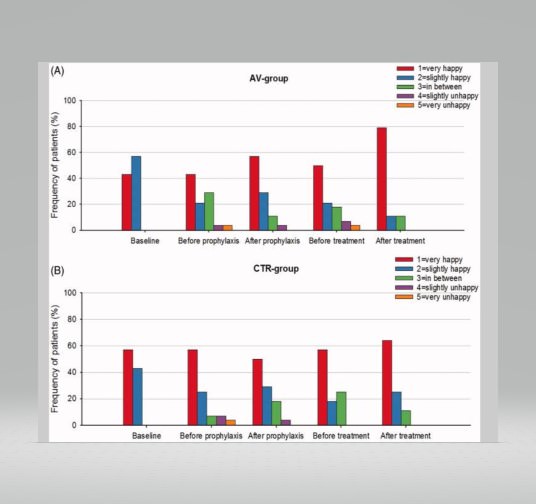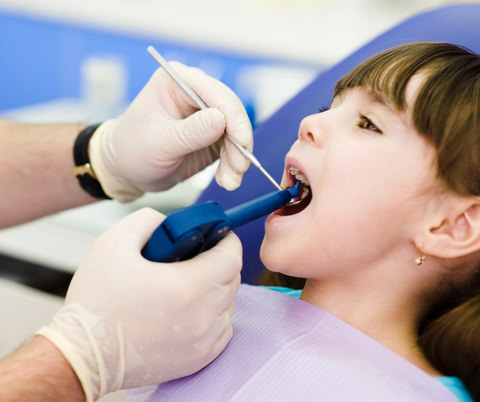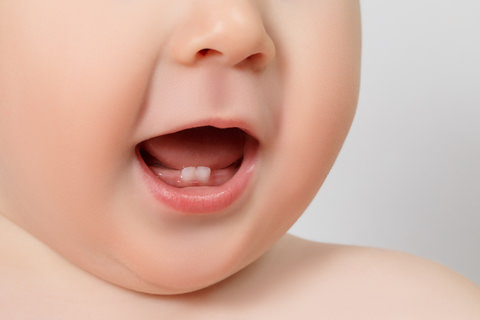Can Distracting Your Kids at the Dentist Help?
Dental anxiety is a common problem in children, so, can distracting your kids at the Dentist help?
Distraction is a behaviour management technique by which the child is distracted from the stimulant that causes them anxiety, thus reducing it.
The main aim of this is to relax your child during their dental treatment.
Different tests have shown different results – low evidence, significant differences, but all signs that a little distraction is better than none.
Controlled trials have been conducted to test whether anxiety can be reduced using toys, audio, audio-visual techniques and other distraction methods.
Today I will discuss studies that have been done on the different methods of distraction.
Why they are necessary, and other things you should do to calm your child down before going to the Dentist.
What is Distraction and Why is it Used?
It’s perfectly normal to have fears – we all have them.
It’s even more normal for children to have fears, especially when they are separated from their parents.
Combine the two, and a common fear is having your child terrified of visiting the dentist (also known as dental anxiety or dental phobia).
Unfortunately, this issue does not only make things difficult for you, the parent, but also for the dentist trying to help the child.
This can be harmful to your child’s dental health, especially if it stops them from getting the oral care they require.
As such, one of the most important objectives for dental professionals is to treat all patients in an anxiety-free environment.
Studies have shown that the fear children interpret prior to, or during, their dental procedure is related to disruptive behaviour, and an increased perception of the pain.
This creates a feeling of nervousness and anxiety about visiting the dentist again.
Based on a theory that a patient’s perception of pain is decreased when they are distracted from the displeasing stimulant.
That is, it is believed that the amount of pain you sense is associated with the amount of attention you pay to the stimulant.
Distraction is thought to be important in lowering levels of pain and anxiety.
Distraction is also thought to modify the attention away from the stimulant to accomplish successful, high-quality treatment.
Studies also show the ideal distraction would require the use of multiple senses (visual, auditory and kinesthetics) and emotional involvement, in order to beat the displeasing stimulant.
Active forms of distraction that promote the child’s participation include interactive toys, virtual reality, controlled breathing, guided imagery and relaxation.
Passive forms of distraction include listening to music and watching television.
It has been shown that the use of audio-visual distraction leads to the full involvement of scenes (visual and auditory), and induces a positive emotional reaction, resulting in a relaxed experience.
Distraction – Does it Work?
Several studies have shown that audio-visual distraction is commonly used in short invasive medical procedures to reduce the patients’ pain and anxiety.
However, we are still unsure as to exactly how effective distraction during dental treatments is.
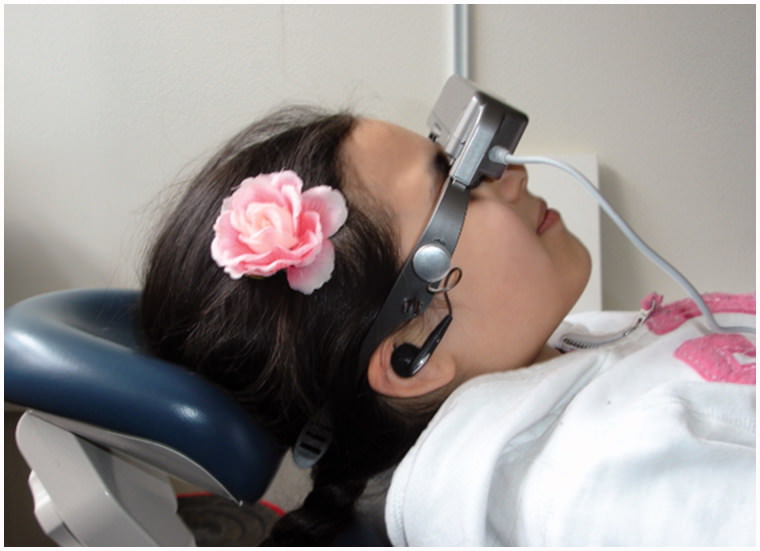
AV Distraction Eyeglasses
The results of some studies showed that the use of audio-visual distraction is successful in decreasing both anxiety and pain perception.
However, other studies found that distraction by playing a cartoon did not reduce disruptive behaviour during their treatment.
It is important to remember that children’s dental anxiety can vary significantly.
Some children have fears relating to dental stimulants, such as the needle or drill.
Other children have more generalised anxiety.
With all of this in mind, we have gone over a few studies for you to show the effectiveness of distraction in the dental clinic.
Study #1 – Low Evidence
In a study labelled the “Use of distraction techniques for the management of fear in paediatric dental practice; a systemic review of randomized controlled trials”, Brazilian researchers sought to determine whether distraction techniques reduced children’s anxiety during dental treatments.
Twenty children under the age of 18 were provided with a number of dental treatments.
Oral examinations, oral prophylaxis, local anaesthesia, dental restoration, endodontic treatments and extractions.
At the same time, they were allowed multiple distraction methods, such as toys, audio, audio-visual techniques, instrument camouflage, biofeedback, and a dental operating microscope.
Results showed very low evidence that distraction techniques effectively reduced anxiety and fear.
Results did depend on the distraction type, the instrument used to measure anxiety and fear, and the dental procedure itself.
However, this test showed little confidence that distraction can be effective in managing a child’s dental anxiety.
Study #2 – Significant Differences
In a study labelled the “Effects of audiovisual distraction on children’s behaviour during dental treatment: a randomized controlled clinical trial”, researchers sought to determine whether viewing videotaped cartoons using an eyeglass system as an audio-visual distraction helped reduce anxiety in children receiving dental treatments.
Active distraction techniques were also used by playing video games on mobile phones.
56 children between the age of 7 and 9 were divided into two groups – one with distraction (AV-group) and one without (CTR-group).
Three dental treatment visits were provided for each child.
Anxiety and cooperative behaviour were assessed by their;
- Facial Image Scale (FIS) – This scale has five faces, ranging from ‘very happy’ (1) to ‘very unhappy’ (5). Each patient was asked to choose one of these faces that best represent their feelings at the beginning, and at the end of each visit
- (MVARS) – Modified Venham’s clinical ratings of anxiety and cooperative behaviour scale.
- Vital signs
- Blood pressure
- Pulse
Results showed the AV group had significantly lower MVARS scores (ratings of anxiety and cooperative behaviour).
The pulse rate also significantly increased in the CTR group during injection with local anaesthesia.
As such, this test showed that audio-visual distraction seemed to be an effective method in reducing anxiety and keeping good cooperative behaviour in children during dental treatments.
What Else Should I Do to Help Calm Down my Child?
If your child has dental anxiety, prepare them for the visit by;
- Telling them in advance that they have a dental appointment – Children need to be aware of what is coming so they can adjust. Waiting until the last moment to tell your child about their dental visit will only worsen their anxiety. They need time to mentally prepare for their visit to the dentist. During that time, you can help them through their dental phobia. Let them talk to you about their fears.
- Answer their questions – Give them straightforward responses. Limit the number of details given, remind them they can ask the dentist questions too. Dental professionals are trained to talk to children in kind ways.
- Talk to them about the importance of maintaining a healthy mouth – Explain the dentist is a friendly doctor who helps take care of their teeth and gums, keeping them safe and healthy.
- Inform your dentist – Ensuring your dentist is aware of your child’s anxiety prior to the appointment will help them be prepared.
During the Visit
Ask your dentist for advice – Follow their instructions. Dental professionals are trained in how to deal with a variety of patients. Ask them what you can do to put your child at ease.
Utilise distraction methods – Bring your child’s favourite toy. This can be a helpful and calming distraction. You can let them play with it in the waiting room. Ask your dentist for permission as to whether they can have small toys during the procedure.
Stay calm – It can be difficult to stay cool while your child has anxiety. Remind yourself to remain calm and speak gently to your child. Having a soothing manner will make them feel safer.
Nothing is working! What do I do?
Things to consider are;
Conscious Sedation – When nothing seems to be helping your child with their dental anxiety, there is another option… Laughing gas.
This safe, effective sedative, used as an anti-anxiety medication, will keep your child calm and relaxed during their treatment.
During conscious sedation, they can still breathe without assistance and respond to verbal and physical stimulation.
Afterwards, your child will probably have no recollection of the procedure and will function as per normal the following day.
Therapy – It may be necessary to seek professional help for your child’s anxiety. It may be worth trying different therapeutic treatments like cognitive behavioural therapy (CBT) or psychotherapy.
These may let your child overcome their fears so they can receive proper dental treatment.
Further Tips to Help
- Don’t tell your child about bad experiences that you have had at the dentist – only tell them the positive!
- Do not use words like “hurt,” “shots,” or “painful.”
- Find a child-friendly dental clinic – find a dentist who speaks in a kind voice, engages your child in conversation, and uses positive reinforcement.
- Don’t give up. Helping your child overcome their fear of the dentist is crucial for their health.
Conclusion
Although authors of studies about distraction have suggested that more robust, well-executed research is required, all signs so far are suggesting it can’t hurt.
After all, distraction is thought to be important in lowering levels of pain and anxiety, to keep attention away from the unpleasant stimulant in order to accomplish a successful, high-quality treatment.
Some information sourced from;
- https://onlinelibrary.wiley.com/doi/abs/10.1111/ipd.12499
- https://www.ncbi.nlm.nih.gov/pmc/articles/PMC4960510/
- https://www.ncbi.nlm.nih.gov/pubmed/6399756
By Dr. V
Created at October 16, 2019, Updated at January 25, 2025


